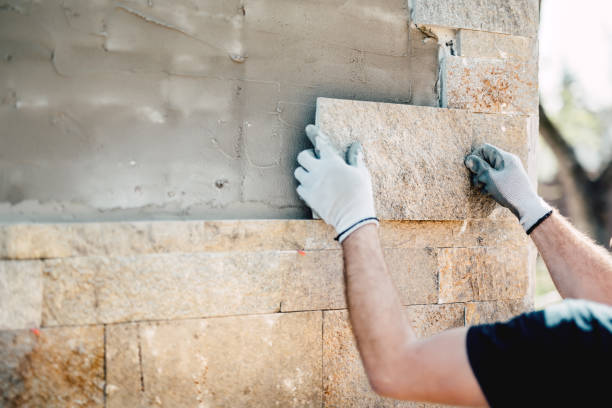Brick is a popular building material in Melbourne, Australia, for its durability, strength, and aesthetic appeal. However, even with its resilience, brickwork is not immune to damage and deterioration over time. This article will explore some common brick repair issues homeowners face in Melbourne, Australia, and discuss potential solutions.
1. Cracked Bricks:
Cracked bricks are a common problem in Melbourne, Australian homes, mainly due to extreme weather conditions. Rapid temperature fluctuations, heavy rainfall, and intense sunlight can cause bricks to expand and contract, leading to cracks. Cracked bricks not only compromise the structural integrity of the building but also allow water penetration, which can cause further damage. Repairing cracked bricks involves removing and replacing the damaged bricks with new ones. It is crucial to use bricks with similar properties to the existing ones to maintain consistency in appearance and strength.
2. Mortar Erosion:
Mortar erosion is another prevalent issue in brickwork. Over time, weather exposure and wear and tear can cause the mortar joints between the bricks to deteriorate, leading to gaps and loose bricks. This can compromise the stability of the structure and allow moisture infiltration. Repairing mortar erosion involves repointing, which removes and replaces the old mortar with fresh mortar. Using the correct mortar mix is essential, ensuring compatibility with the existing bricks and maintaining the wall’s structural integrity.
3. Efflorescence:
Efflorescence is a white powdery substance that appears on the surface of bricks. It occurs when water penetrates the bricks and dissolves salts within them. The salts are left behind as the water evaporates, creating a visible residue. Efflorescence affects the aesthetic appeal of the brickwork and can indicate water damage. The bricks must be cleaned using appropriate solutions to remove the salt deposits to repair efflorescence. Additionally, identifying and addressing the source of water infiltration is crucial to prevent further efflorescence.
4. Spalling:
Spalling refers to the flaking or chipping of the outer layer of bricks. This issue is commonly caused by moisture infiltration, freeze-thaw cycles, or improper cleaning methods. Spalling not only affects the appearance of the bricks but also compromises their structural integrity. Repairing spalling involves replacing the damaged bricks and addressing the underlying cause of moisture infiltration. Applying a waterproof sealant to the bricks can help prevent future spalling.
5. Bowing or Bulging Walls:
Bowing or bulging walls occur when the brickwork starts to curve or protrude outward. Inadequate wall ties, poor construction techniques, or moisture-related problems usually cause this issue. Bowing or bulging walls can be a significant structural concern, indicating potential instability. Repairing bowing or bulging walls requires professional intervention, which may involve reinforcing the brickwork, installing additional wall ties, or addressing the underlying moisture issues.
Common brick repair issues in Melbourne, Australia include cracked bricks, mortar erosion, efflorescence, spalling, and bowing or bulging walls. These issues compromise the aesthetic appeal of brickwork and affect its structural integrity. Timely identification and appropriate repair are crucial to prevent further damage and maintain the longevity of brick structures. Seeking professional help from brick repair experts is advisable to ensure proper diagnosis and effective solutions for these issues.
